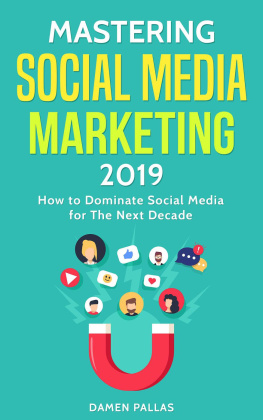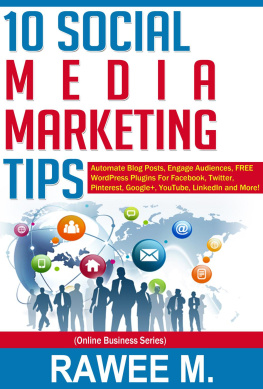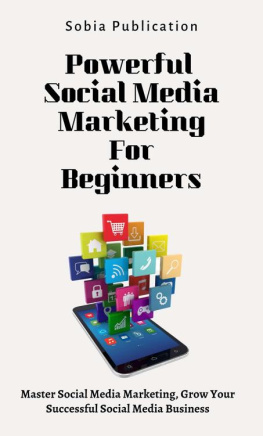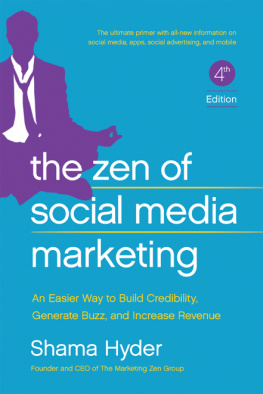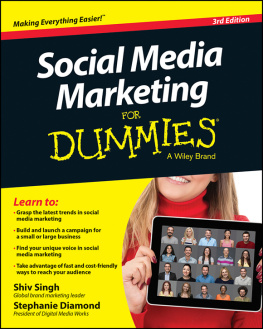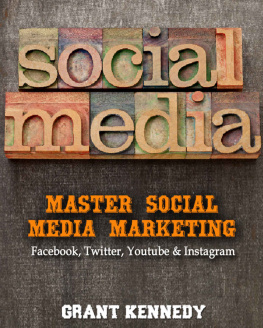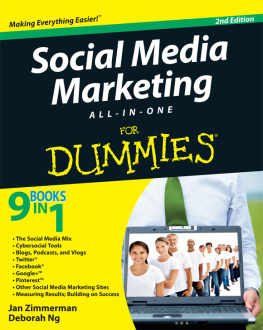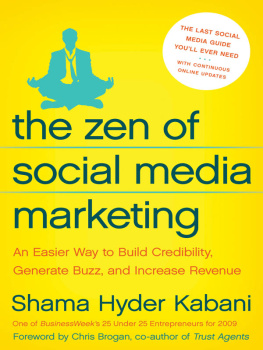CONTENTS

Copyright 2012 by Innovative Thinking, LLC. All rights reserved.
Published by John Wiley & Sons, Inc., Hoboken, New Jersey.
Published simultaneously in Canada.
No part of this publication may be reproduced, stored in a retrieval system, or transmitted in any form or by any means, electronic, mechanical, photocopying, recording, scanning, or otherwise, except as permitted under Section 107 or 108 of the 1976 United States Copyright Act, without either the prior written permission of the Publisher, or authorization through payment of the appropriate per-copy fee to the Copyright Clearance Center, Inc., 222 Rosewood Drive, Danvers, MA 01923, (978) 7508400, fax (978) 6468600, or on the web at www.copyright.com . Requests to the Publisher for permission should be addressed to the Permissions Department, John Wiley & Sons, Inc., 111 River Street, Hoboken, NJ 07030, (201) 7486011, fax (201) 7486008, or online at www.wiley.com/go/permissions .
Limit of Liability/Disclaimer of Warranty: While the publisher and author have used their best efforts in preparing this book, they make no representations or warranties with respect to the accuracy or completeness of the contents of this book and specifically disclaim any implied warranties of merchantability or fitness for a particular purpose. No warranty may be created or extended by sales representatives or written sales materials. The advice and strategies contained herein may not be suitable for your situation. You should consult with a professional where appropriate. Neither the publisher nor author shall be liable for any loss of profit or any other commercial damages, including but not limited to special, incidental, consequential, or other damages.
For general information on our other products and services or for technical support, please contact our Customer Care Department within the United States at (800) 7622974, outside the United States at (317) 5723993 or fax (317) 5724002.
Wiley publishes in a variety of print and electronic formats and by print-on-demand. Some material included with standard print versions of this book may not be included in e-books or in print-on-demand. If this book refers to media such as a CD or DVD that is not included in the version you purchased, you may download this material at http://booksupport.wiley.com . For more information about Wiley products, visit www.wiley.com .
ISBN 978-1-118-26974-9 (paper); ISBN 978-1-118-28345-5 (ebk); ISBN 978-1-118-28478-0 (ebk); ISBN 978-1-118-28723-1 (ebk)
ACKNOWLEDGMENTS
This project was the largest and most passionate undertaking of my career, and using social media to create a book on social media was by far the most enlightening.
When I first created the plan to write a book on social media, I thought it was going to be another typical business book: 250 pages, 20-plus chapters, 50,000 words, the typical business book formula.
Then I realized that it was not only in my best interest to use social media, but also in a way, that I should use social media to create this book. I knew that if I asked the business community what they wanted in a book and wrote it that way, the book would be successful and it was. What I didnt know at the time was the magnitude of the journey I was about to undertake.
We brought the initial concept of the book on social media to more than 1,000 people. They were mostly professionals with annual incomes over $100,000; most had college degrees, from associates up to PhDs.
Of more than 1,000 surveyed, 66.4 percent said that they could not define what social media is, while 99.1 percent said that they knew social media would have a significant effect on them and their businesses. Let me restate this: Two-thirds of these professionals didnt know what it was, but nearly 100 percent knew it was going to affect them. This is whom this book is dedicated to.
By using user-generated content and feedback, I also learned that the business community didnt want just another vertical business book; they wanted something much more comprehensive. They asked for a book that first explains: What are all of these things we keep hearing about? Whats a blog, a vlog, a podcast? What is a trusted network and wisdom of the crowds? What is LinkedIn, MySpace, Flickr, and YouTube? So this became the blueprint for Part I, Tactics and Tools, which in itself is a business book on the tactics of social media.
Finally, they wanted a book that could pull all of this together answering the questions: How do I use social media in my business? How can I incorporate this in my business plan? How do I make money using social media? Wheres the ROI? How will this change the way I do business? This became Part II of the book, Strategy.
During the past year, I have had the opportunity to speak with such companies as NCO, Levi Strauss, Nike, United Airlines, PepsiCo, Coca-Cola, Dial, Intel, Scotts, Frito-Lay, General Mills, LOral, Kraft, Dannon, Omaha Steaks, Unisys (Burroughs), La Quinta, Lilly, and dozens of entrepreneurs, governmental agencies, and nonprofits. The one run-on question they had in common was: How do I put together a strategy that includes my conventional media, integrates social media, determines what social media tools I should use, find the resources, and measure my success?
So in this edition, the Part II, Strategy, section has been completely rewritten. In this new section, I give you The Five Steps to Social Media Success, which addresses all of the questions asked earlier in five easy steps. This new section is down and dirty and in the weeds, and what you will get out of it is what you are willing to put into it. I ask you to look at things most marketing, PR, and upper management people never want to discuss: The cost of customer acquisition and the actual ROI of each of your existing marketing campaigns and efforts.
Once you determine your ROI, and cost of customer acquisition on your existing marketing, you can now better reallocate existing resources, both human and financial, to marketing that is significantly more effective: social media.
I approached John Wiley & Sons, Inc. with a concept of multiple full-sized business books (two business books in one). They trusted the wisdom of the crowds and the result is The Social Media Bible.
The remaining change that has taken place with this third edition is The Social Media Bible is now 75 percent of its original size. Now that people are beginning to understand the fundamentals of social media, I decided to reduce the size of the book and, while providing the history of all of the technologies, focus more on the state of the art of how social media is being used.
The Social Media Bible is an aggregation of ideas, thoughts, and my own experiences from blogs, vlogs, podcasts, videos, books, wikis, e-mails, and conversations. As Francis Crick, the Nobel Prize winner for his discovery of the double helix, said during his acceptance speech while quoting Sir Isaac Newton, If I have seen farther than others, it is because I have stood on the shoulders of giants.
Thank you to Jimmy Wales for creating Wikipedia and the Wikimedia Foundation and to all of the people from around the world who have contributed to Wikipedia, providing such a valuable resource of cumulative human knowledge.
I want to personally thank all of the corporate partners who shared their expert insights in both the book and their executive conversations at www.theSocialMediaBible.com , the 23 technical editors, and the 26 ROI of Social Media vignettes authors.


